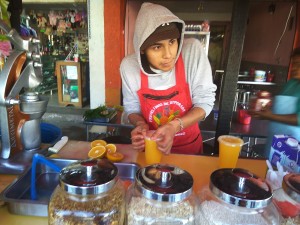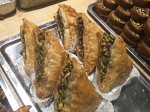
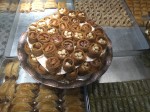
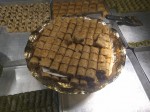
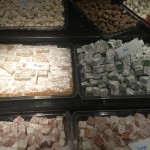
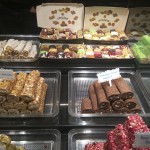
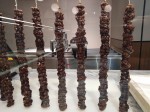
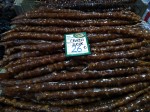
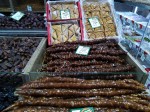
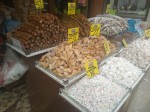



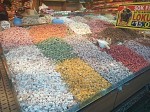




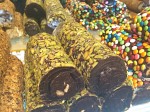
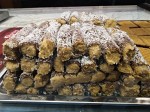
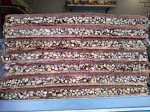
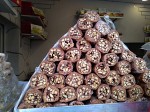
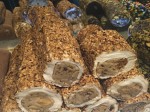
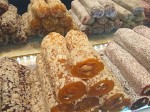
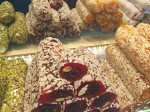
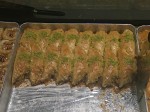

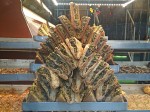
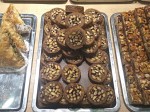
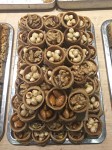
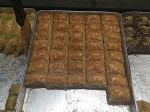
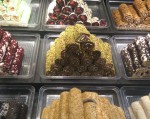

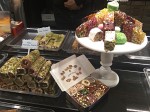
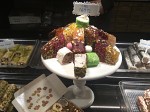
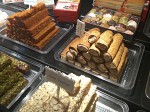


Doesn’t matter whether you are looking for sweets or not, you cannot not me mention them. Packed in gift boxes, sold in rolls, per piece or kilo. Colorful, produced with precision and carefulness, Turkish sweets, known as Turkish Delights are a feast for an eye.
Sometimes you even wonder, whether you should eat it, or is it just a decoration. A plethora of colors, shapes and textures, makes Turkish delights so different. Almost no regular cakes or buns are in a Turkish sweets’ menu. Jelly and nougat like sweets are dominating. And of course, all pastries similar to baklava and including phyllo dough. Some sweets are soft and dry, some are moist and oily. What is common for all Turkish delights, is their sweetness.
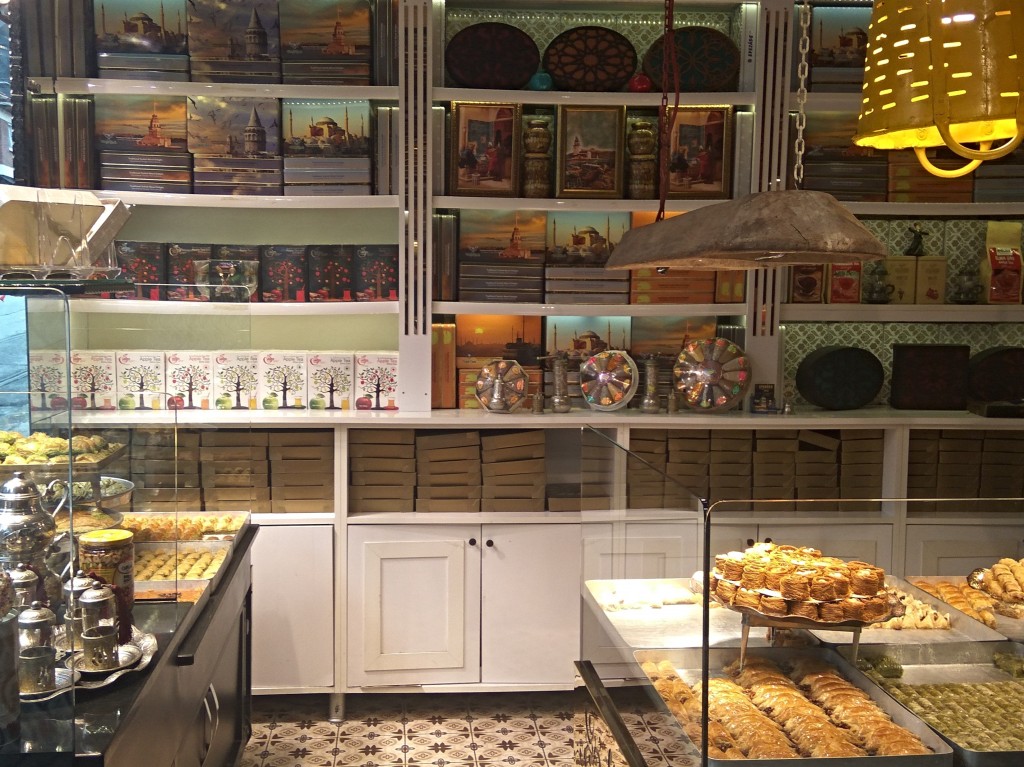
As soon as you come to Istanbul, traditional Turkish sweets pop on you. Elegant boxes, heaps of lokum, burma rolls and souvenir shops are almost everywhere. Wherever you look, you see ‘Lokum’ or ‘Turkish Delights’ signs. Sellers from small shops offer you ‘natural and original’ sweets and free sampling. The same is on bazaars and local markets. To convince you to buy delights from them, they tempt you free of charge packing options, so that you are sure you can take it with you. Gift boxes and vacuum bags are the one that are the most favorite for them. If you are still not convinced, whether you would like them or not, maybe your friends or family would like to have a nice Turkish souvenir.

And Istanbul is not the only city where these sweets are so easily available. Turks love sweets, so they buy and eat them regularly. Turkish Delights are also served with Turkish coffee as a small and quick bite.
Sweets has always played a significant role in the Turkish cuisine. Some bakeries and confectionaries date from 19th century and not only have a big reputability, but also offer traditional and handmade products. The best example of such a confectionary is Hafız Mustafa 1864.
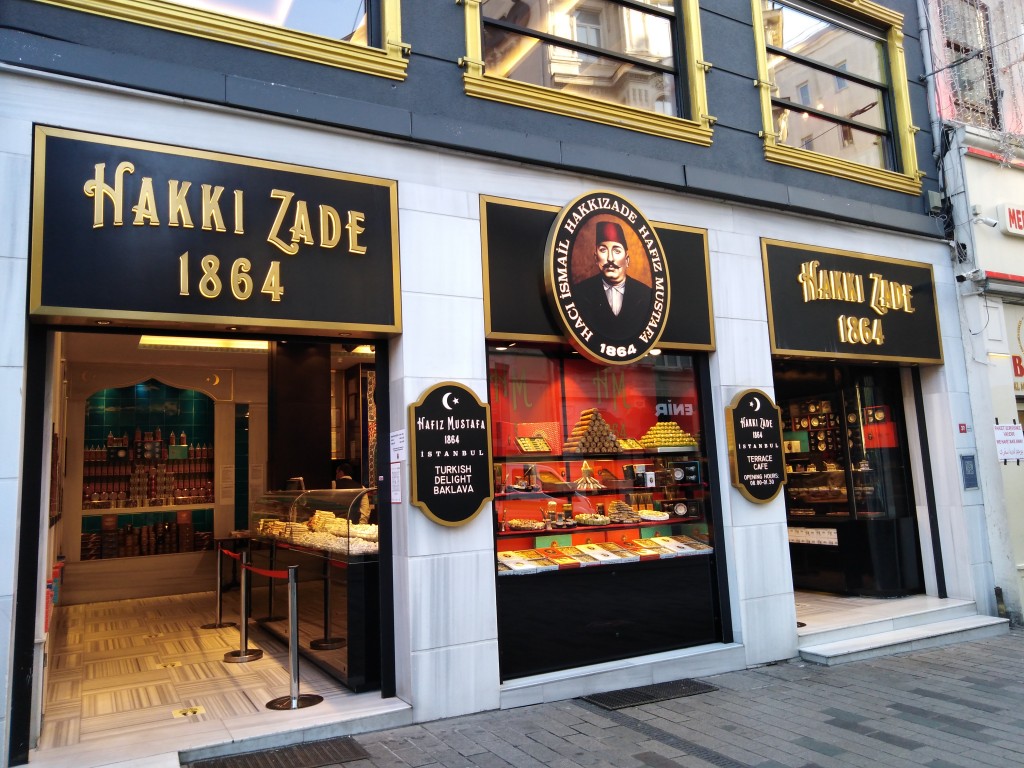
Hafız Mustafa 1864 confectionary uses only natural ingredients, replaces glucose with sugar cane and all artificial colorants with these fruity and natural substitutes. No chemical essences are added and the water that is used for the production, is a famous Zamzam water. In their assortment, you will find not only traditional Turkish delights, but also some variations on local sweets. The company updates its offer according to current tastes, preferences and trends. All products are handmade and either packed in ultra-elegant boxes or cans.
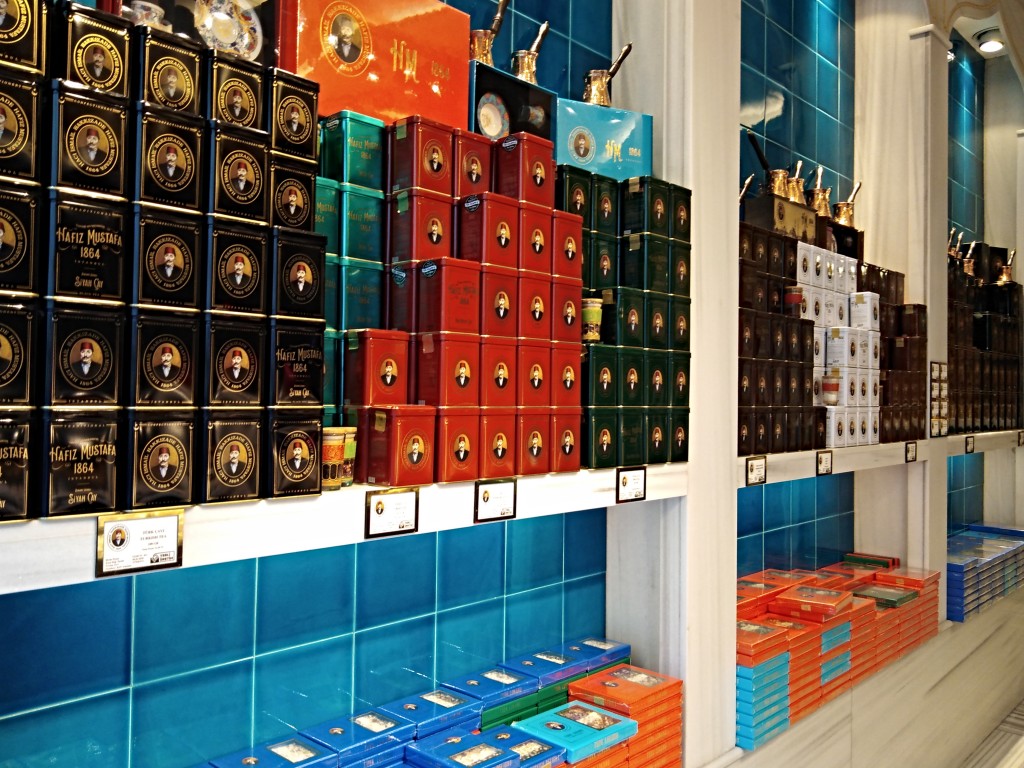
Local shops and bazaars offer usually only the most popular and traditional ones. Baklava, cevizli sucuk, bülbül yuvasi and lokum are these that are almost everywhere. We selected our favorites, so before buying Turkish delights, have a read and decide what might be the best for you, and what to avoid.
1. Pasha Turkish Delights – rolls
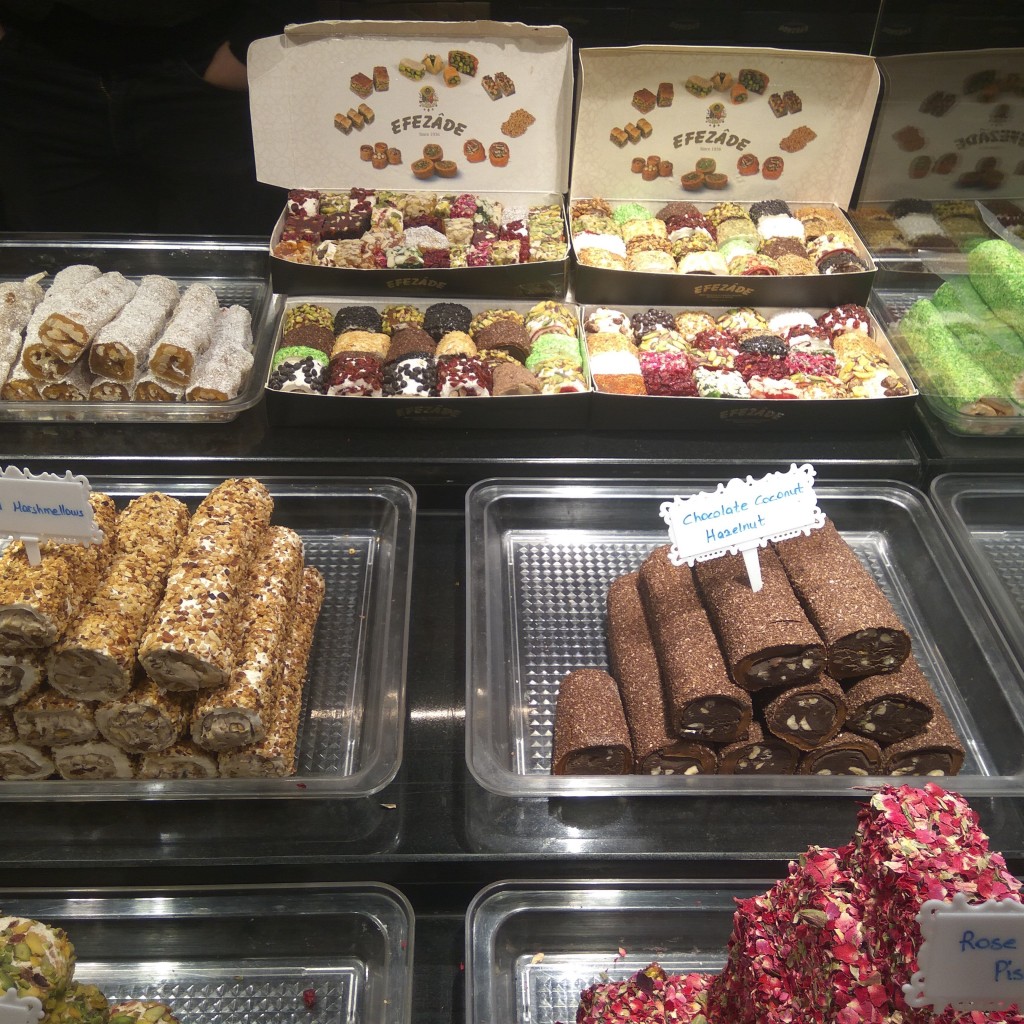
These sweet rolls are the one you will probably be offered to try on a bazaar or in a souvenir shop. Cut into small pieces or thin slices, a number of different flavors and colors will surely impress you. Pasha lokum is one of the most popular and liked ones. Nougat like, with nuts or flakes outside offers a good composition of sweet and very often sour tastes.
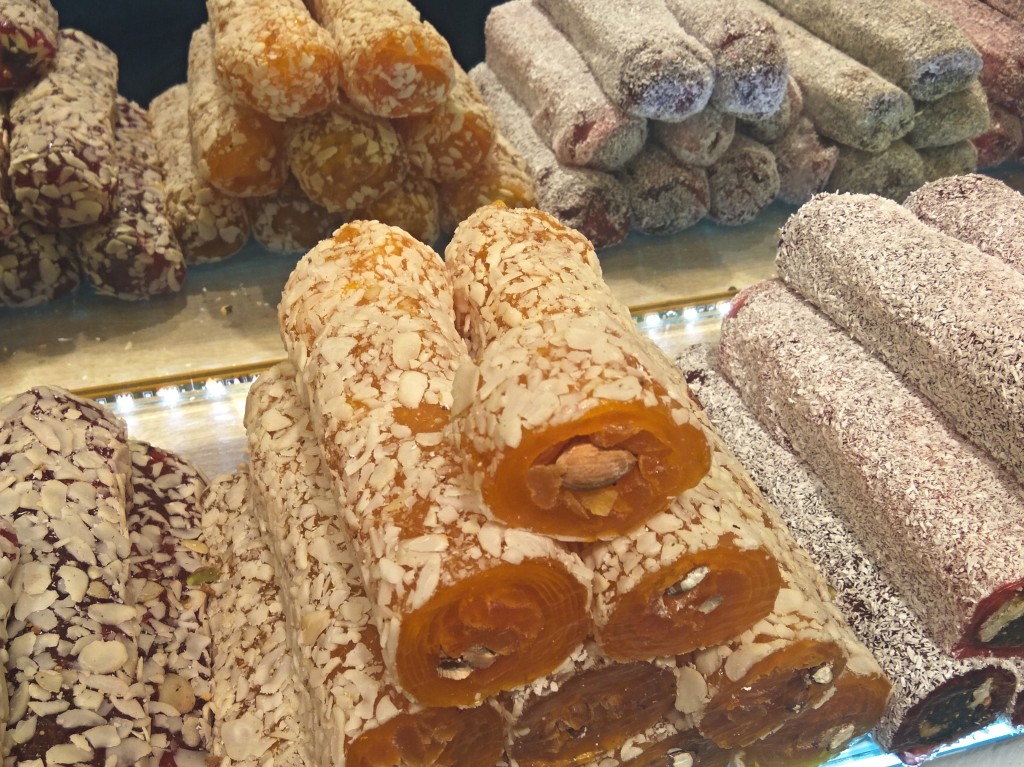
Generally speaking, lokum rolls are basing on a glucose and gel of starch. Very often, sellers say these sweets are made 100% from honey, but it is rather improbable. While it is true, that some delights might be partially made of honey, 100% is not possible. The main reason is that, that if the sweet was made in 100% from honey, it would not keep the shape and would easily melt.
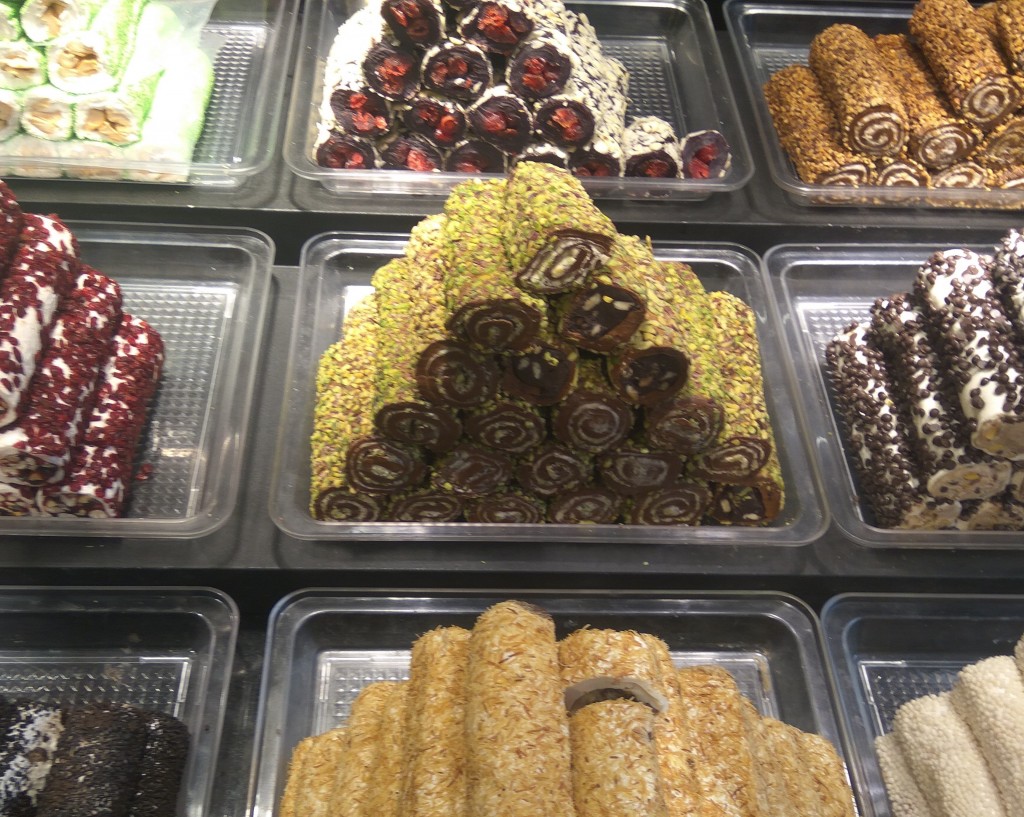
Lokum rolls come in different combinations. Some of them are fully nougat like, some of them have a both jelly and nougat like filling. Depending on that, either more fruity or nutty flavors are to be found.
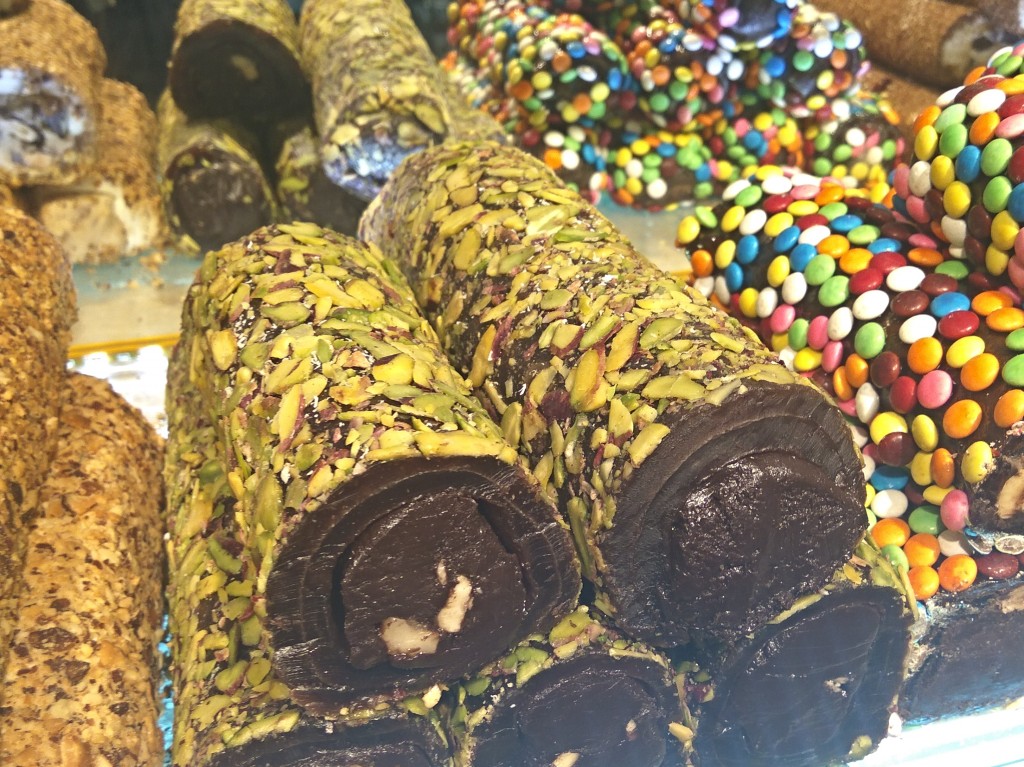
Hibiscus, lemon, orange, pomegranate, strawberry, apricot and mango flavors are the most typical for the jelly filling. The inner nougat like filling flavors usually include chocolate, nuts, coco, pistachio, almond or caramel. The dough for both layers is rolled and put one on the other. The lower layer is sometimes sprinkled with nuts, flower petals or coconut flakes from the outside. Then both layers are rolled and shaped in a cylinder form. When served, it is cut in 1-2 cm wide slices.
2. Lokum traditional Turkish delights in cubes
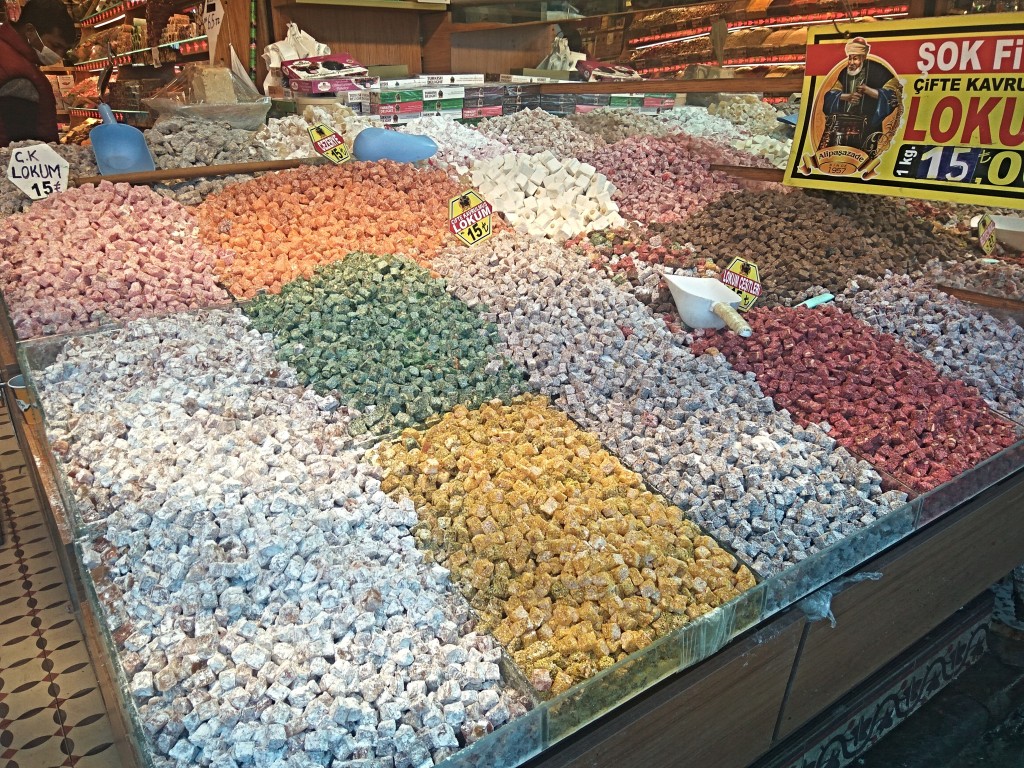
These delights date from the beginning of the 18th century. They are cut into small cubes and very often served with a small cup of a Turkish coffee. Lokum are made of sugar and gel of starch. The basic and the most traditional version contains mainly one of the ingredients like rosewater, lemon, pomegranate, bergamot or blossom orange. More sophisticated and expensive ones have inside chopped nuts, dates, pistachios, hazelnuts or apricots’ or figs’ paste. All these ingredients are then combined by a sweet and jelly and starchy like mixture. Finally, Lokum is covered with a dusty powdered cream, cocoa or coco coating. Sometimes you might also find cubes served with an icing sugar. Apart from that, what might be important for you, Lokum is both vegetarian and vegan!
Lokum is chewy, soft and a little bit moist. It is sweet and pair ideally with unsweetened coffee.
3. Cevizli sucuk or Küme
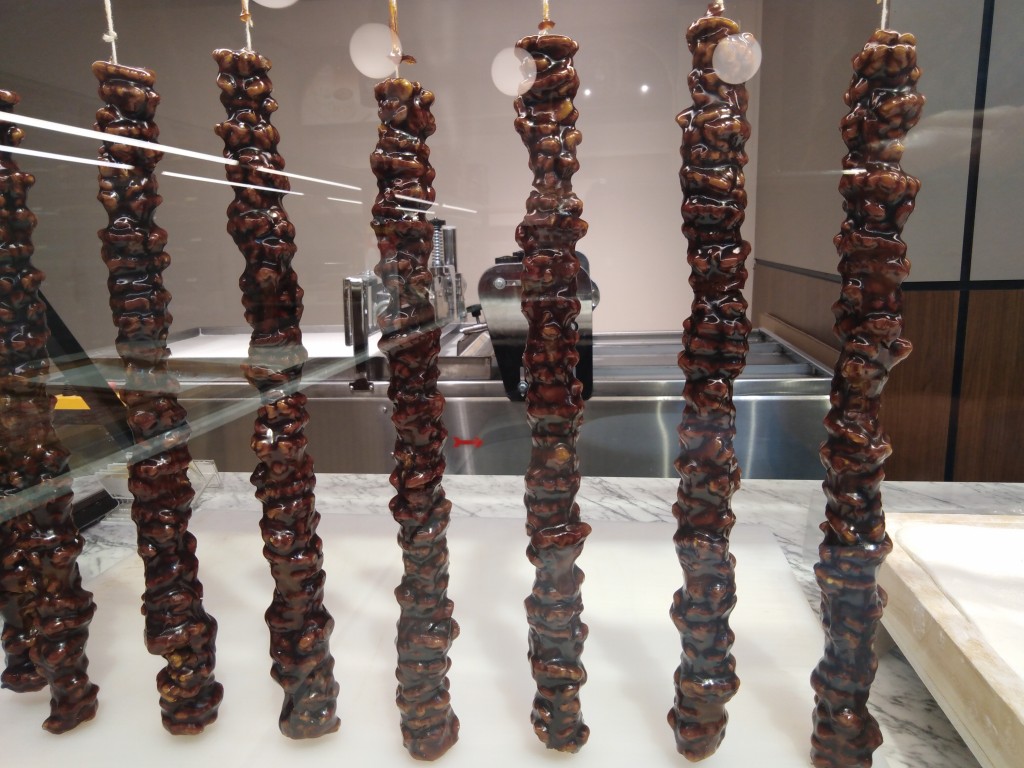
Cevizli sucuk is made of dried fruits (mainly grapes) and walnuts (rarer are pistachios, almonds or hazelnuts) that are hung on a string and then dipped in a thickened grape or other fruit's juice. Finally, it is shaped in a sausage or candle like form and left on the sun for drying and hardening. This process takes up to one week. Cevizli sucuk originates from Georgia, but Turkish cuisine has adopted it and also made some slight modifications.
Originally Cevizli sucuk was made in Autumn when grapes were mature and ready for harvesting. They were made without sugar and only with natural ingredients.
4. Baklava
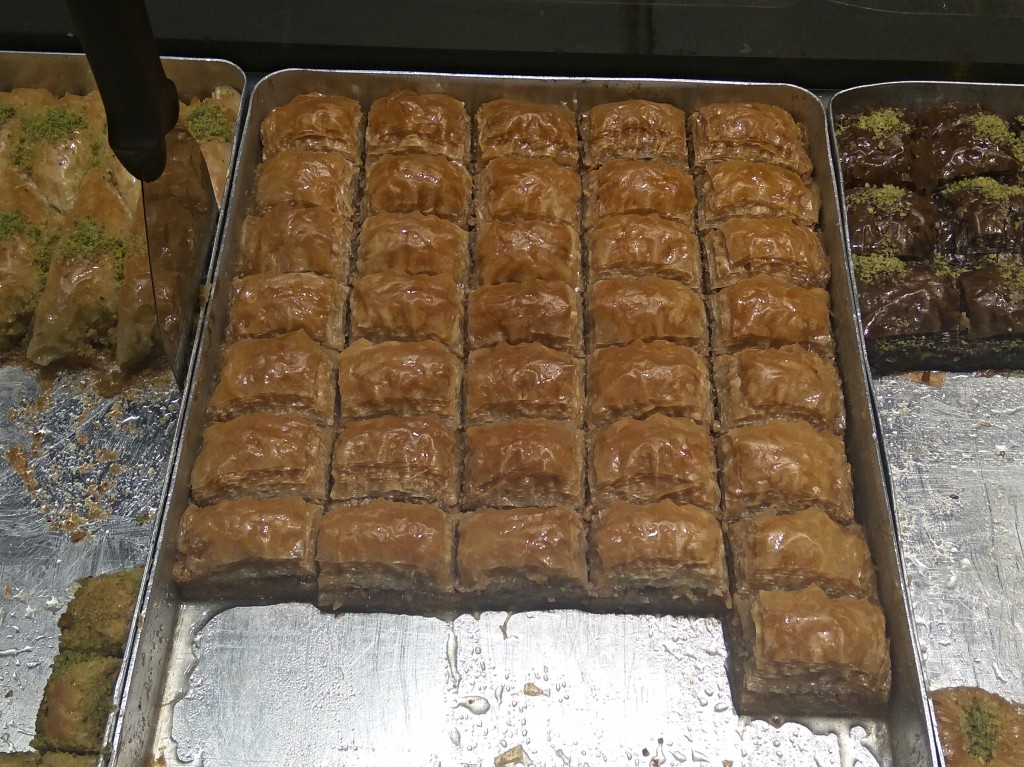
Baklava is generally speaking a phyllo like dough filled with a nutty mixture. Usually the stuffing is made of pistachios, hazelnuts or walnuts. This dessert is the most popular one and the one that is the best know around the world. Baklava is a Turkish staple, that is served in almost all restaurants and take-away bars. Very often, it is not only sprinkled with nuts, but also topped with ice creams or kaymak. Baklava is sweet, moist and crunchy in the same time. The phyllo-like dough is delicate and crunchy.
5. Bülbül yuvası
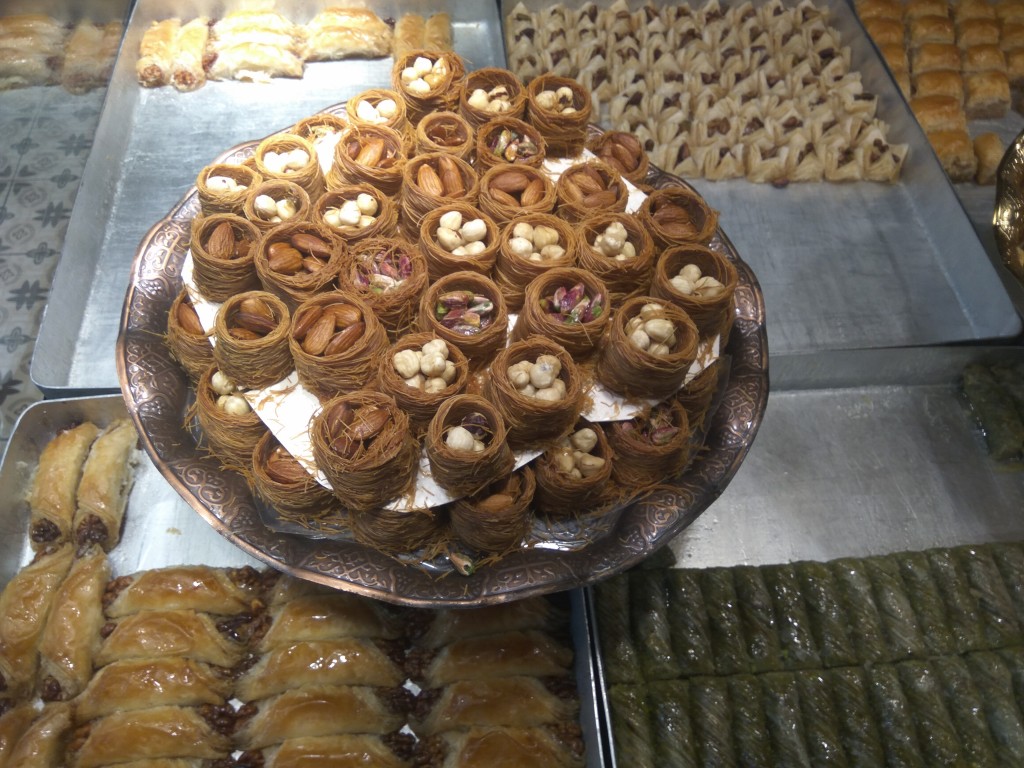
If you had to describe bülbül yuvasi, the best way to do that, is to say, that it is a rolled version of baklava. As it is in baklava, the surrounding phyllo dough is stuffed with nuts. Phyllo dough is formed in a circular shape, baked and finally filled with nuts – mostly that are pistachios, however you might also find other nut. Just before serving, bülbül yuvasi is topped with a special sweet syrup. Thanks to that, bülbül yuvasi gets it is unique sweet flavor and keeps moisture.
6. Künefe (Kanafeh)
Künefe is a deep-fried, noodle-like pastry, topped with nuts. The pastry for Künefe is very thin and delicate. It is a shredded phyllo dough or a semolina one, that before filling is heated with butter, oil or margarine. The deep-fried pastry is topped with nuts, cheese or cream and then covered with another pastry layer. Finally, it is soaked in a sweet, sugar-based syrup that sometimes is flavored with a rose water or blossom orange. At the end, künefe is topped with crushed pistachios.
7. Şöbiyet
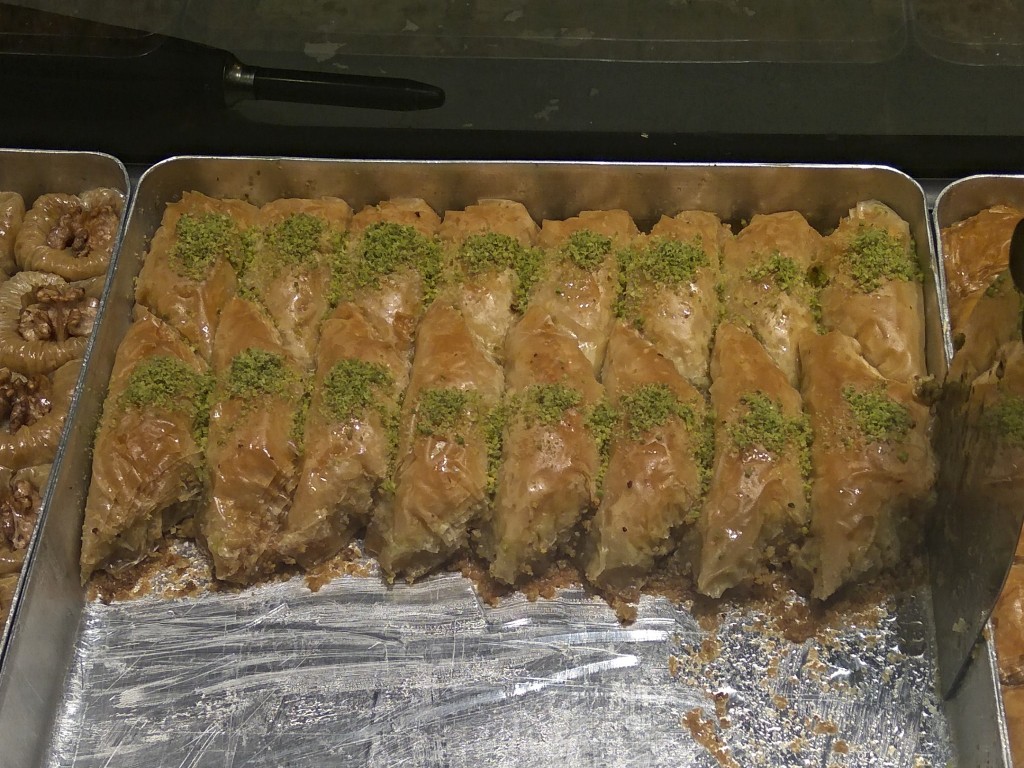
Şöbiyet is another dessert basing on a phyllo-like dough. Apart from that, Şöbiyet contains milk, semolina and sometimes nuts. To prepare the pudding-like cream, that creates the filling, milk and semolina have to be boiled. Typically, 10 phyllo-like dough sheets should be used. After heating them with butter, margarine or oil, they should be placed one after another and baked. Then, cut into square shape pieces, on which center, a creamy filling is placed. Finally, each square shaped piece is folded in half, so that it forms a triangle. It is once again baked and at the end topped with a sweet syrup. To garnish it, fine grated pistachios are used.
Read more about sweets in other countries and about coffees that might lower your sugar level.
Portuguese coffee - An ultimate coffee guide - Portuguese coffee types
Mexican coffee - The best Mexican coffee
Vietnamese coffee - How to make a Vietnamese Coffee?
Lebanese sweets - Extremely sweet, smooth and full of flavors - that is how the Lebanese Halva is!
Japanese sweets - Japanese sweets - how are they? and Not sweet sweets, that are Japanese sweets
Egyptian sweets - All you would like to know about traditional Egyptian sweets
Check our recipes too and make them at home!
Date: 2020-12-08
Author: Beti – A passionate traveler and lover of Asian cuisine, especially Thai and Japanese dishes, Bernadeta brings her culinary and cultural experiences to life in her writing. Beyond her travels, she’s an avid technology enthusiast with a deep interest in data processing, merging her love for exploration with analytical insights.
Photographer: Adalbert – An aficionado of computers and photography, Adalbert captures the essence of diverse cuisines with a discerning eye. A connoisseur of rich flavors and particularly fond of meat-based dishes, he combines his technical skills with his passion for the culinary arts in every shot.

